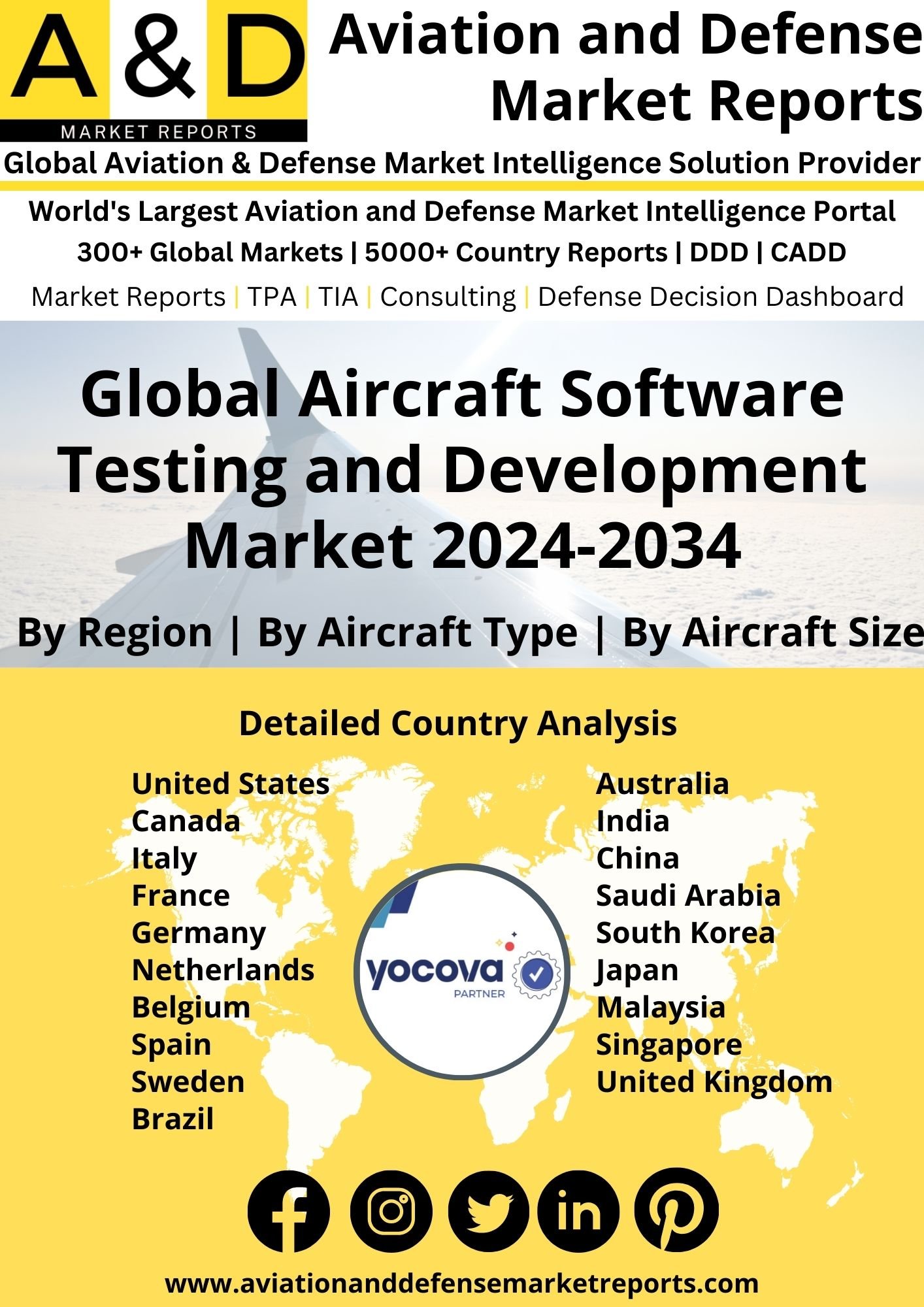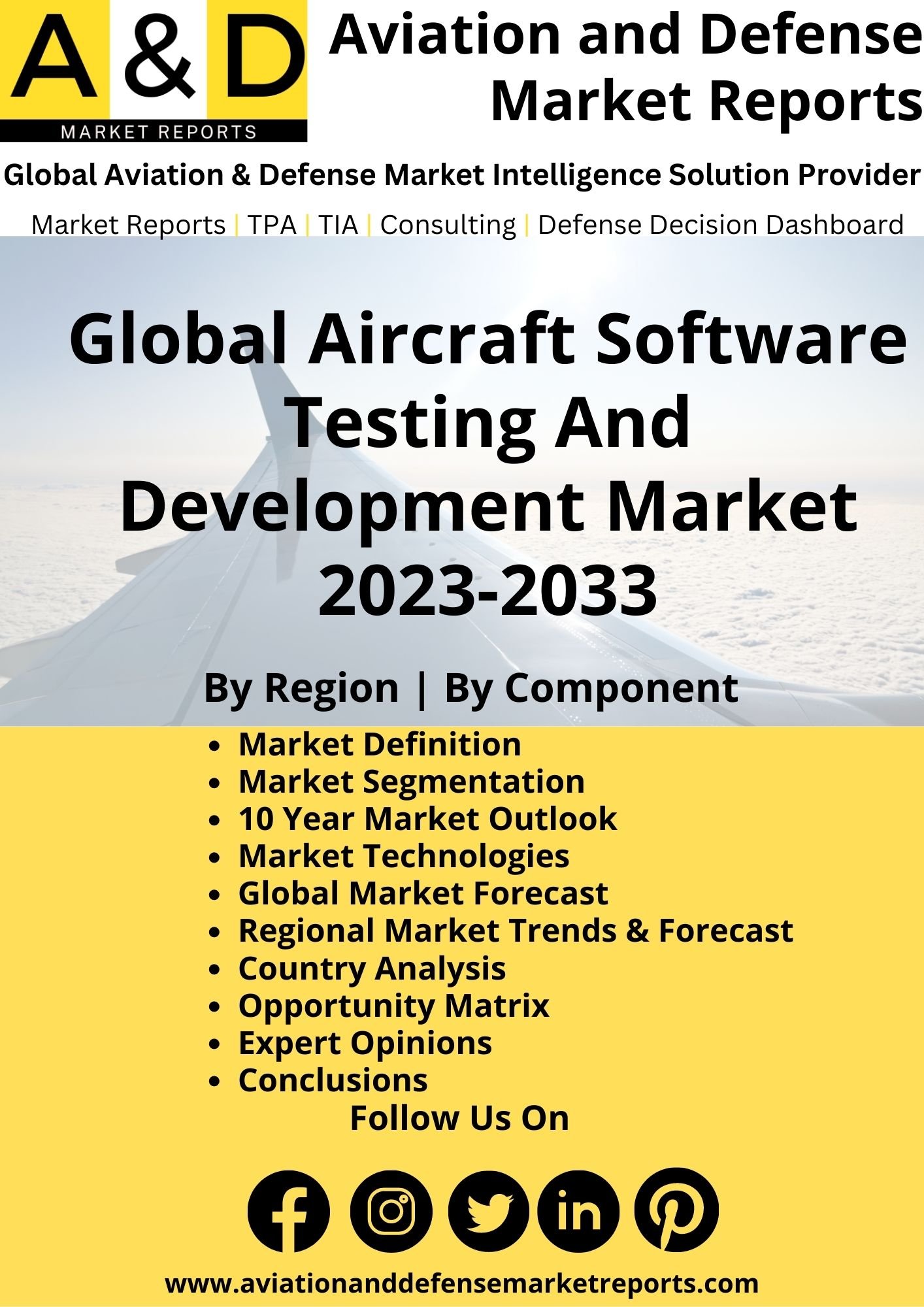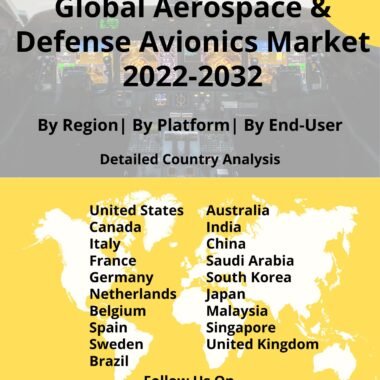Description
Aircraft Software Testing and Development Market
Frequently Asked Questions of ASTD Market
The functioning, safety, and operations of an airplane during flight are heavily dependent on many forms of software. Software is widely used in avionics, from the seatbelt indicator to the control unit. As a result, it should go without saying that aircraft software testing and development market analysis is essential to ensure that an aircraft operates as intended. Software testing and quality control are consequently the aerospace industry’s support structures. When it comes to testing and validating aircraft software applications, there are very tight criteria that must be adhered to without exception in order to ensure the safety and wellbeing of commuters, the flight crew, and the vehicle itself. In addition to thousands of various functions, the procedure involves millions of separate codes.
Functional testing: This ensures that the software programmes meet both high-level and low-level requirements. Timing of the worst-case scenario: There are some lines of code that must operate within a given time limit, and it is essential to test that they do so. Analysis of structural coverage: This makes sure that the codes’ structural provisions have been examined and verified to the extent required by industry norms.The aviation sector is changing as a result of digital disruptions. Travelers’ expectations for excellent digital experiences and airline-related services are changing as a result of technology. Airlines and other industry-related businesses must respond to these changes with ground-breaking technical innovations.
Avionics software differs significantly from other embedded systems in that actual standards are frequently far more stringent and complex than commercial standards, which are typically specified in publications that run into the hundreds of pages. Typically, a real-time operating system is used to execute it. Most procedures have documentation or software to track requirements from numbered paragraphs in the specs and designs to precise lines of code, with accurate tests for each, and a box on the final certification checklist because the process is legally needed. This is specifically done to demonstrate compliance with the legal requirements. Due to the use of alternative technologies or low safety level standards, there may be deviations from a given project to the processes detailed here.
Major factors driving Aircraft Software Testing and Development Market Growth
The increasing demand for new aircrafts by operator will create significant demand for aircraft software testing and development market. For the two biggest commercial jet manufacturers, 2021 was a year of recovery after a more than difficult 2020 caused by the COVID-19 epidemic. Despite the current conflict between Russia and Ukraine, 2022 is already well under way and is anticipated to be another year of recovery for the commercial aircraft manufacturing business. However, there is still a long way to go before deliveries resume to their pre-pandemic levels at Boeing and Airbus.
Trends influencing the Aircraft Software Testing and Development Market Size
Avionics software differs significantly from other embedded systems in that actual standards are frequently far more stringent and complex than commercial standards, which are typically specified in publications that run into the hundreds of pages. Typically, a real-time operating system is used to execute it. Aircraft software testing and development market forecast is a crucial area of attention for adjustments and enhancements. To overcome the difficulties of obtaining “Quality at Speed” amongst the growing complexity of systems, settings, and data, testing procedures and technologies must change. Although the software research community has long used artificial intelligence and machine learning (AI/ML) approaches to address difficulties in software testing, current advances in AI/ML and the abundance of data now available present new opportunities to use AI/ML in testing. AI and Machine Learning will influence the aircraft software testing and development market growth.
Aircraft Software Testing and Development Market Forecast & Dynamics
The International Civil Aviation Organization (ICAO) projects that both passenger and freight traffic should quadruple by 2035. An increase in middle-class disposable income and the emergence of low-cost airlines are two factors that have contributed to an increase in airline passengers. The demand for in-flight entertainment and connectivity services has grown significantly along with the increase in airline passengers. The number of passengers flying has increased in major nations like Canada, the United States, Brazil, Indonesia, the Philippines, China, Saudi Arabia, and India. When people seek to escape the monotonous routine that has emerged as the “new normal” in the wake of the coronavirus epidemic, this behavior is referred to as revenge travel or tourism. It also results from a condition known as “lockdown fatigue,” or exhaustion that worsens as a result of monotony. These factors significantly increase the demand for aircraft software testing and development market size.
Aircraft Software Testing and Development Market Analysis for Recent Developments
With the opening of a new office in Phoenix, Arizona, Daedalean, a Swiss company that creates AI and machine learning software for aviation systems, has begun operations outside of Europe. After working for Intel for the last seven years as an aeronautical engineer and worldwide sales director, Dr. Yemaya Bordain will lead Daedalean’s Americas division.
Engineers from NASA, Sikorsky, and DARPA are partnering to develop automation software for aircraft that they will test with two modified helicopters as surrogate air taxis.
To test algorithms using customized test tablets with scripted flight paths, researchers and pilots at the Armstrong Flight Research Center in Edwards, California, have been putting the software through simulations of air-to-air encounters. The team will assess how the software allows pilots in a highly complex, dynamic, and dense Advanced Air Mobility (AAM) airspace to use the tablet to initiate specific autonomous flight rules that would be standard for air taxis. NASA researchers will use the Sikorsky Autonomy Research Aircraft, a modified S-76B helicopter, and the company’s Optionally Piloted Vehicle Black Hawk helicopter as air-taxi surrogates when the project reaches the flight testing stage. Through a variety of Advanced Air Mobility operations flight scenarios, their tests will assess the automation software and flight control tablets developed by NASA. The two aircraft will fly themselves while NASA test pilots and Sikorsky safety pilots are on board to conduct tests and collect data from exact flight scenarios. The pilots will use the research tablets to interact with the tablets and choose their preferred avoidance maneuvers from a list of options provided by the software.






